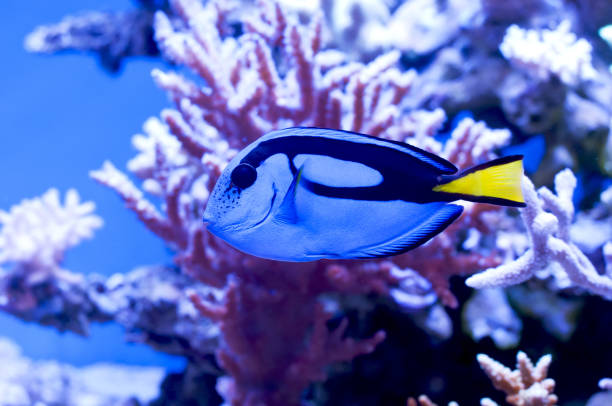Setting Up Your First Saltwater Aquarium
As a beginner, you’re excited to dive into the world of saltwater aquariums. The sparkling, colorful reefs beckon you like an underwater oasis. But between cycling the tank, maintaining ideal water parameters, and keeping your fish healthy, the learning curve can feel steep. Take a deep breath. This is just the start of an amazing hobby. With some basic knowledge about setup and maintenance, patience through the nitrogen cycle, and close monitoring of water conditions, you’ll gain the skills needed to create a thriving underwater ecosystem. Follow this guide to transform from saltwater aquarium novice to expert. The vibrant coral reef of your dreams awaits you.
Maintaining Proper Water Quality in a Saltwater Aquarium
To establish a thriving saltwater aquarium, you’ll need the proper equipment and take the time to cycle the tank.
First, select an aquarium that holds at least 20 gallons. Saltwater fish require more space than freshwater fish. Choose a rectangular tank for the most natural environment. You’ll also want a secure lid, as saltwater fish can jump.
Next, install an efficient filtration system, like a hang-on-back or canister filter. A protein skimmer removes waste and helps keep water conditions healthy. For lighting, choose LED or T5 fluorescent bulbs that provide full spectrum light for 12-14 hours per day.
Heating and additional circulation are must-haves. Aim for a temperature of 72-78 F. An aquarium heater will maintain steady heat, while a circulation pump helps filter water and provides oxygenation.
Once your equipment is set up, fill the tank with pre-made saltwater or mix dechlorinated water with marine salt. Let the water cycle for at least a week before adding fish or invertebrates. This allows beneficial bacteria to establish and convert harmful waste into less toxic compounds.
Test your water conditions regularly and perform partial water changes of 10-15% weekly or biweekly. Keep salinity between 1.020 to 1.026, pH between 8 and 8.4, ammonia and nitrites at 0 ppm, and nitrates less than 20 ppm.
By providing an appropriately sized tank, efficient filtration and lighting, consistent temperature control, and allowing time for cycling and maturation, you’ll be on your way to a thriving saltwater aquarium. With regular maintenance and testing, you’ll keep your fish and invertebrates happy and healthy.
Stocking Your Saltwater Aquarium: Choosing the Right Fish and Invertebrates
To keep your saltwater aquarium healthy and the inhabitants thriving, maintaining high water quality is essential. You’ll need to regularly test key parameters and make necessary adjustments.
– Test the water conditions at least once a week, including salinity (specific gravity), pH, ammonia, nitrite, and nitrate. Salinity should remain between 1.023 to 1.025. The pH should stay between 8 and 8.3. Ammonia and nitrites must be kept at 0, while nitrates are best below 20 ppm. If any levels are off, conduct a partial water change of 10-15% and retest to ensure proper balance.
– Perform regular partial water changes of 10-15% of the total volume every week or two. This removes toxins and replenishes trace elements. During water changes, vacuum the substrate to remove waste and uneaten food. Replace with pre-mixed saltwater of the same temperature and salinity as the tank.
– Run a protein skimmer and external filter with activated carbon and filter pads to help remove dissolved organics and pollutants that can affect water quality. Replace activated carbon every few weeks. An undergravel filter or sump with refugium can further aid in filtration and maintaining a stable environment.
– Limit feeding to 2-3 times per day and only provide as much food as your fish can eat in about 2 minutes at each feeding. Uneaten food will break down and reduce water quality.
By routinely testing and changing water, filtering appropriately, limiting excess feeding, and taking corrective steps as needed, you’ll be able to keep your saltwater aquarium healthy for your fish and invertebrates. The effort is well worth it for a thriving underwater ecosystem you can enjoy for years to come.

